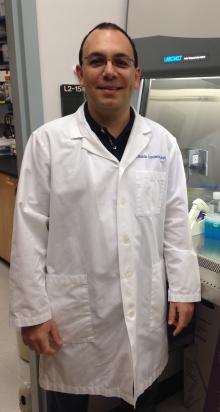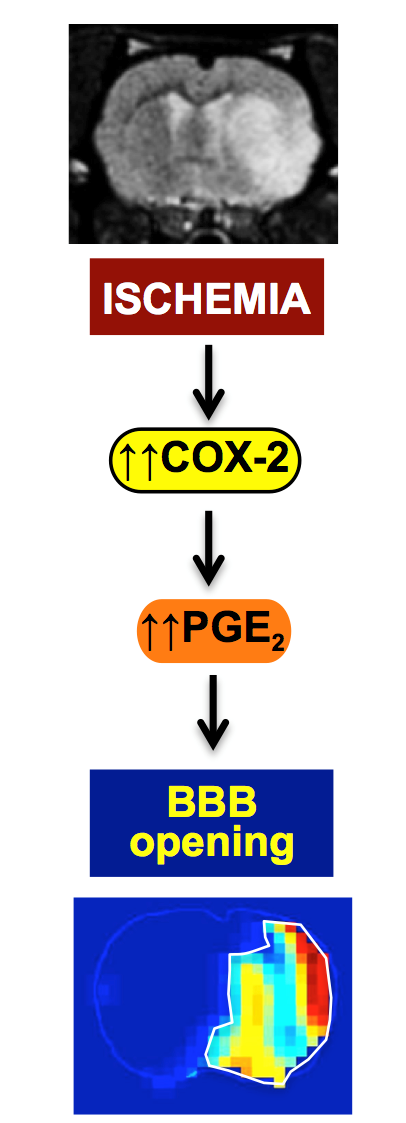
Eduardo Candelario-Jalil, Ph.D.
Assistant Professor
Department of Neuroscience
McKnight Brain Institute
University of Florida
Successfully transitioning to independence
For any young investigator, transitioning from a postdoctoral position to an independent academic position is a challenging task. In my career, I benefited from two NINDS diversity programs that supported me during this difficult period: the diversity supplement program and the grant writing workshop. I am extremely grateful to NINDS for the opportunities and support they provided.
During my Ph.D. and early postdoc training in Germany, I was conducting basic research on neuroinflammatory mechanisms of ischemic stroke and how inflammation contributes to injury. My work was mostly in animal models of ischemic injury, and I didn’t have the clinical perspective that would really maximize the translational relevance of my work.
During my second postdoc in Dr. Gary A. Rosenberg’s lab at the University of New Mexico (UNM), I applied for and received an NIH diversity supplement to his R01 from NINDS. The goal of this supplemental grant was to provide me with a strong translational perspective. The research investigated levels of matrix metalloproteinases (MMPs) in the CSF of humans with vascular cognitive impairment. During conditions of neuroinflammation after hypoxia, MMPs disrupt the blood-brain barrier and may contribute to the pathophysiology of the disorder.
Although I had worked on MMPs before in animal models, with the supplement-funded research, I was immersed in the clinical side, learned the clinical “language,” and saw how clinical researchers approached the problem in a different way. This experience transformed my subsequent basic research. Now, I consider the clinical perspective in my experimental design. What post-ischemic time points are most relevant? What route of administration is clinically feasible? How can I design longitudinal studies and consider neurological recovery and the long term effects of drugs? All these are factors I hadn’t thought about before.
The supplement also gave me the opportunity to build other skills I needed for independence. For example, my mentor arranged for investigators working on the parent grant to train me in MRI methods. I also took several courses at UNM, including experimental design, biostatistics, grantsmanship, bioinformatics, and research ethics.
At the same time I was working on MMPs, I was gathering preliminary data for an R01 application on the role of cyclooxygenase-2 (COX-2) in damage to the blood-brain barrier in ischemic stroke. My first R01 application did not receive a score. My mentor helped me restructure the application and respond to the reviewers’ criticisms for resubmission, resulting in an improved score, but still not fundable (50th percentile).
Shortly afterwards, I obtained a travel award to attend the Grant Writing Workshop for Diversity Investigators organized by NINDS. In just two days, I gained significant experience and expert guidance on how to write a successful application. In particular, I got the feedback that I wasn’t communicating the importance and excitement of the proposed research in my specific aims. I was focusing too much on the details and methods without describing why the research was important. Two months after I attended the workshop, I resubmitted my R01 grant with that critique in mind. My score significantly increased to the 15th percentile, and the proposal was funded in 2011.
I have since secured a tenure-track independent academic position in the Department of Neuroscience at the University of Florida in Gainesville. I strongly believe that the programs and funding offered by the NINDS diversity programs played a key role in my success in obtaining R01 funding and a tenure-track faculty position. I encourage all minority investigators to take advantage of the career development programs they offer.
Current Research

My research interests have been fostered by many years of laboratory work in neuropharmacology, biochemistry and molecular biology. My postdoctoral training in Germany and the United States focused upon elucidating the mechanisms underlying the neuroprotective ability of COX-2 inhibitors in experimental animal models of ischemic injury. My current research activities are focused on identifying the downstream prostaglandin E2 (PGE2) receptors involved in ischemic brain injury and neuroinflammatory mechanisms responsible for the late opening of the blood-brain barrier following stroke.
My research program has great translational potential and involves a multimodal approach to understand neuroinflammatory mechanisms following ischemic stroke as well as short- and long-term effects of neuroprotective agents. As encouraged by the NIH/NINDS Roadmap (pdf, 100 kb), this type of translational research is of fundamental importance in accelerating the development of effective stroke therapeutics.
